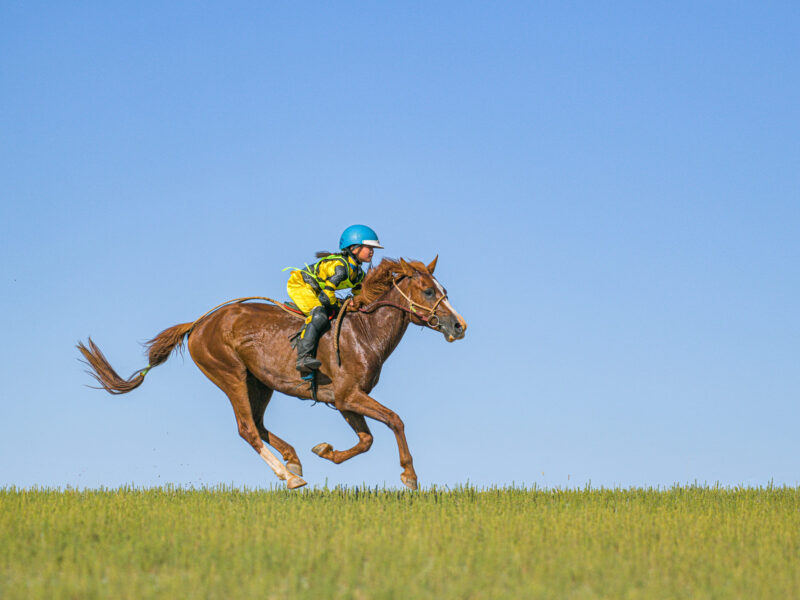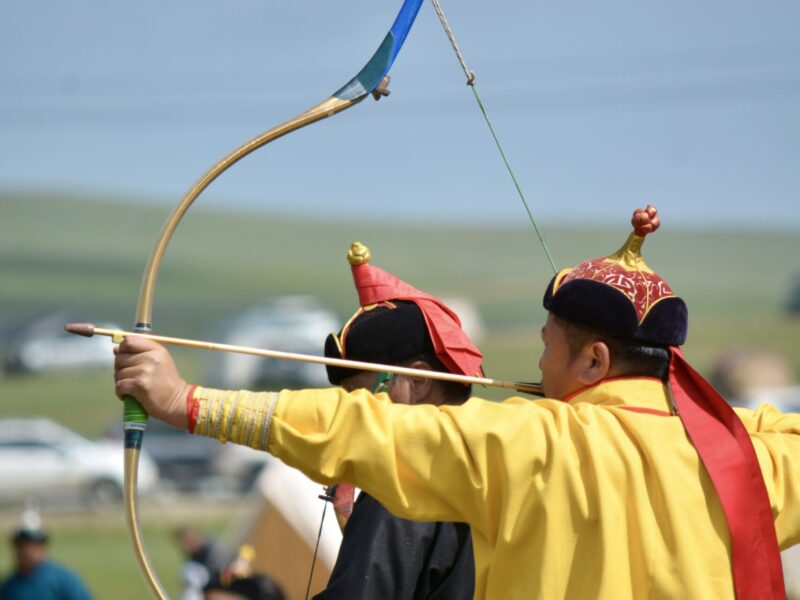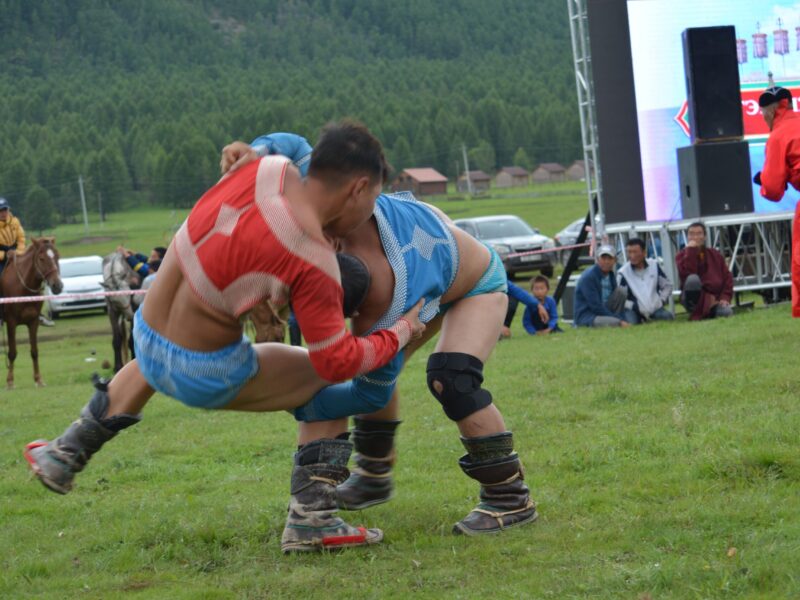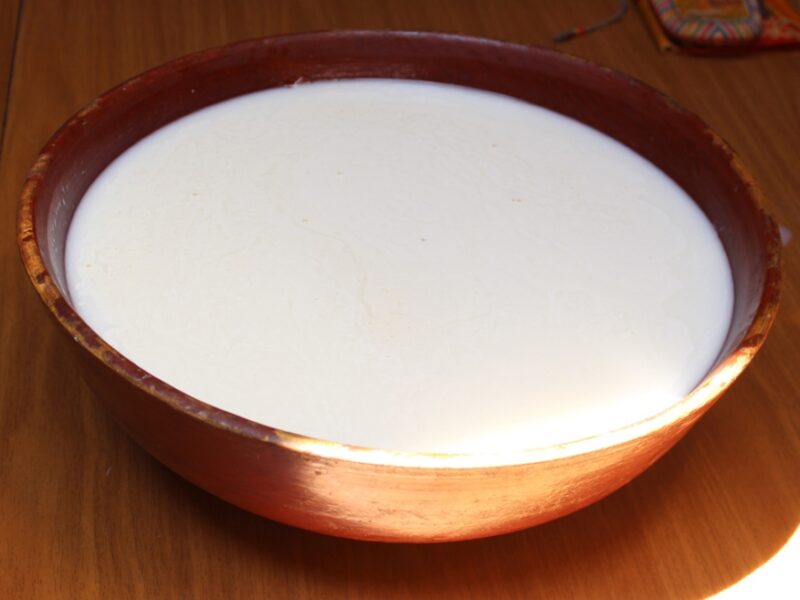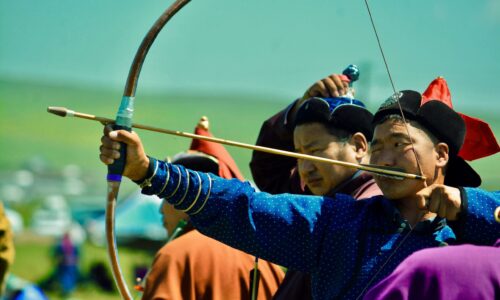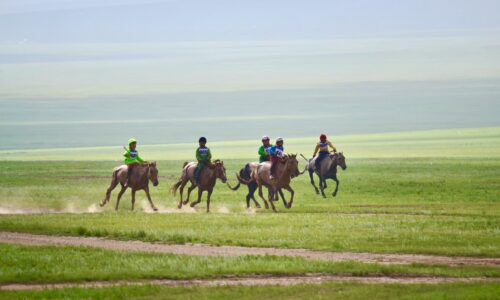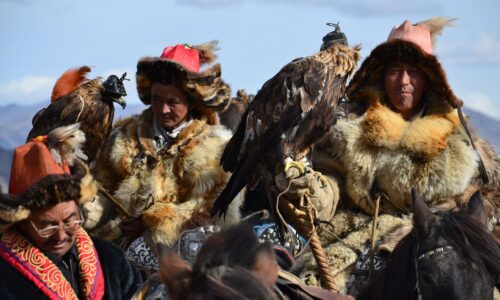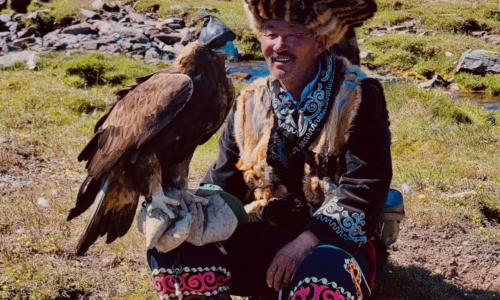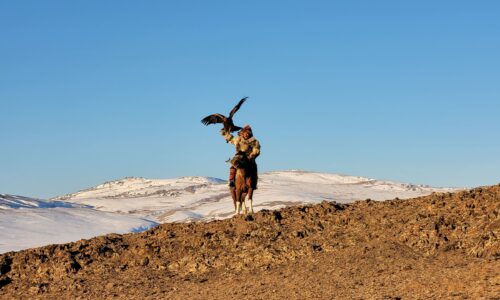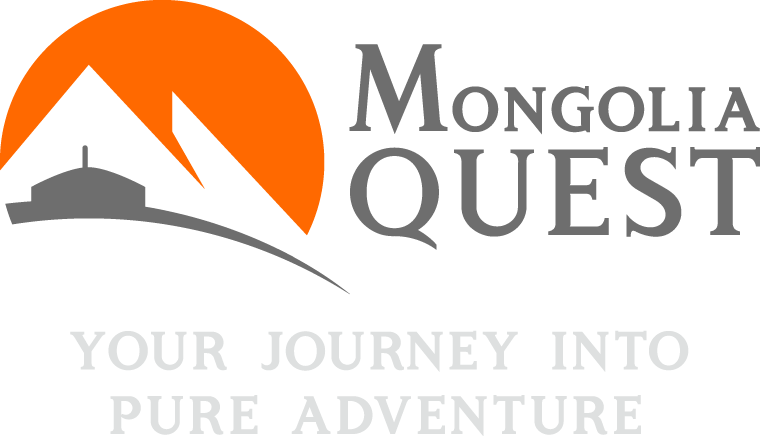So, you’re wondering when is the best time to visit Mongolia. Most people will tell you summer’s the way to go—and they’re not wrong. The warm months are perfect for exploring our wide-open landscapes, festivals, and nomadic culture. But here’s the thing: every season here has its magic.no matter when you visit, Mongolia has something special to offer. Whether you’re into laid-back travel, adrenaline-filled adventures, or soaking up our rich culture, there’s a season that’s just right for you.
Winter? Oh, it’s not for the faint of heart, but it’s incredible if you’re up for an adventure—think frozen lakes, snow-covered steppes, and a whole new level of silence. Spring? Well, let us warn you, it’s intense. Mongolians like to say the spring wind is sharp enough to slice through your ribs. Dramatic, right? But it’s true!
To help you decide when to go, Mongolia’s travel year can be divided into two main periods:
-
May to October: Peak travel season—ideal for festivals, nomadic culture, and warm-weather exploration.
-
October to May: Shoulder season—quieter, colder, and full of unexpected rewards for the adventurous traveler.
Stick with us as we break down each season, explore what makes it special, and help you plan a journey that captures the very best of Mongolia.
Mongolia at a Glance: Facts & Figures
Before we talk about the best time to visit, let’s take a moment to appreciate just how remarkable Mongolia truly is.
Spanning 1,654,110 square kilometers (about 4.4 times the size of Germany!), Mongolia is the 19th largest country in the world. Its diverse geography is nothing short of breathtaking—think endless steppes, vast deserts, rugged mountains, and crystal-clear lakes.
Situated on the Central Asian plateau, Mongolia boasts landscapes that feel like they belong to another world. And it’s not just the scenery that’s special—Mongolia’s flora and fauna are equally unique, with many species found nowhere else on Earth.
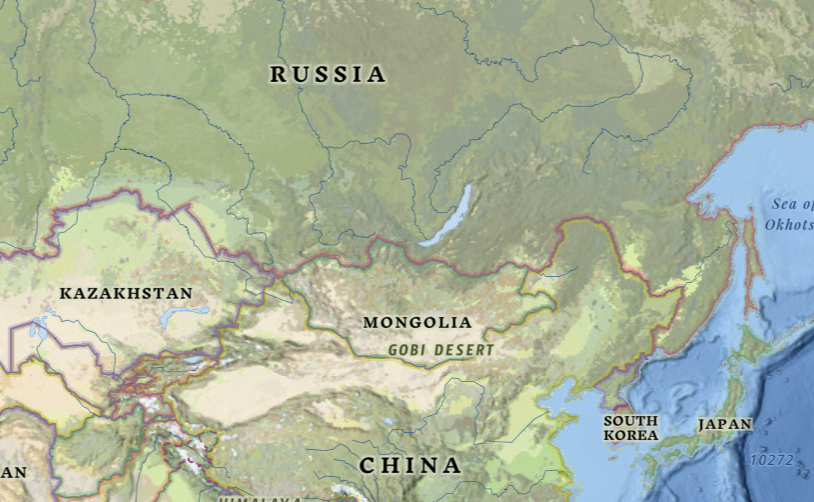
Some interesting facts about Mongolia:
-
Area: 1,654,110 km2 (19th largest country globally)
-
Population: 3.5 million
-
Location: Bordered by Russia andChina
-
Capital: Ulaanbaatar
-
Languages: Khalkha Mongol
-
Ethnicity: Mongol (mostly Khalkha) 94.9%, Kazakh 5%, other 0.1% Currency: Mongolian Tugrik (MNT) Time Zone: GMT/UTC+08:00 hour. Religion: Mostly Buddhist (87% of religious population), 5.4% Muslim, 4.2% Shamanism, 2.2% – Christian, 1.1% Other.
- Despite its vast size, Mongolia remains one of the least densely populated countries in the world, with just 3.5 million people—about 2.14 people per square kilometer.
- There are more horses than people in Mongolia—almost 5 million horses roam the land, a testament to the country’s deep-rooted nomadic culture.
- A Land of Contrasts: Mongolia’s geography is as diverse as it is stunning. The north and west are dominated by towering mountain ranges and rolling steppes, while the south and east are home to the vast, arid Gobi Desert. Despite being landlocked, Mongolia is dotted with lakes, streams, and rivers, creating a striking blend of rugged peaks and expansive flatlands.
In short, Mongolia’s vastness and variety make it a dream destination, no matter the season. Let’s explore when you should visit to make the most of your time here!
Why Winter and Spring in Mongolia Are Challenging?
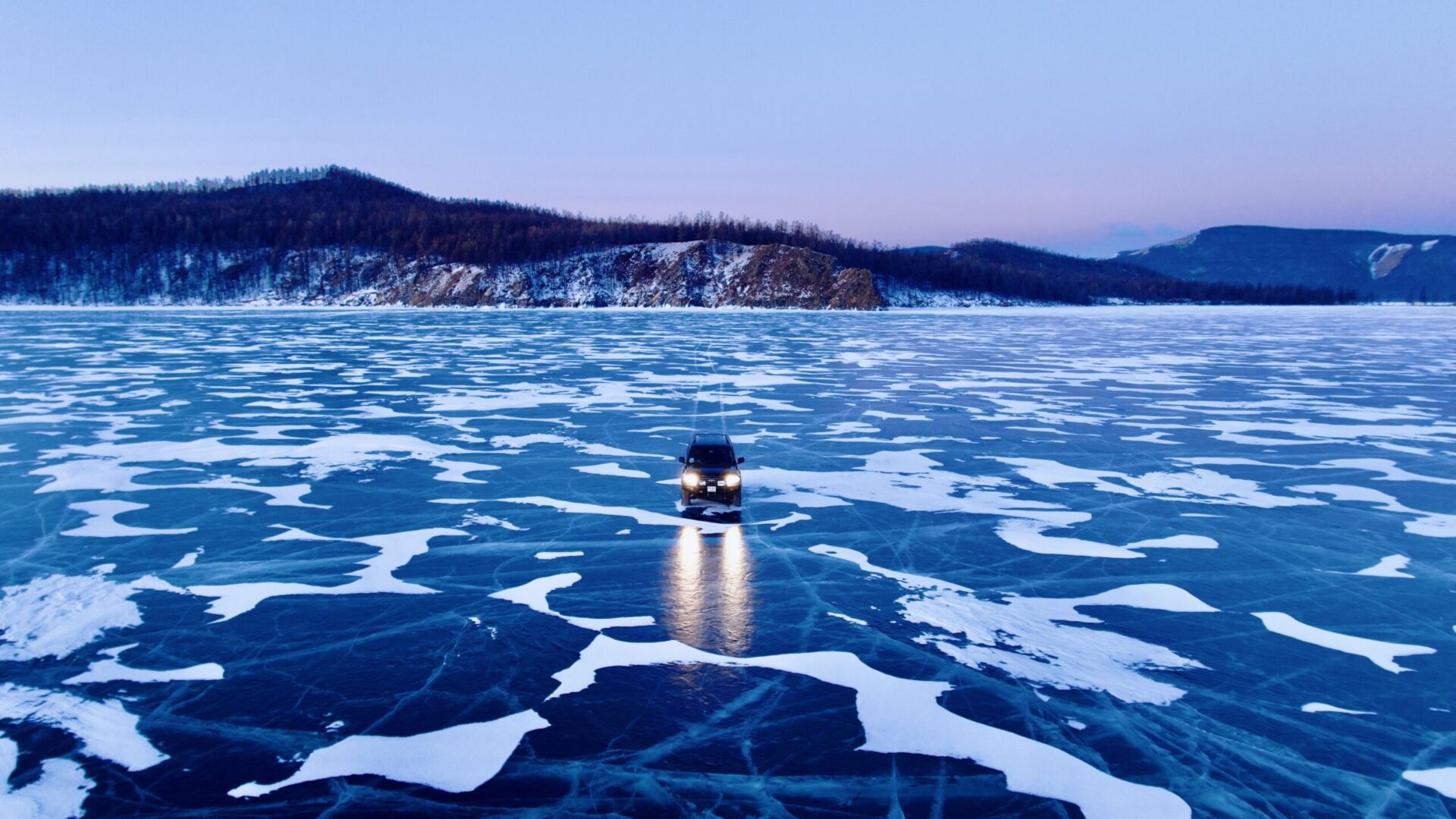
Winter and spring in Mongolia aren’t the easiest seasons to travel, but they’re the most rewarding. Winter means deep cold, snow-covered steppes, and a peaceful stillness you won’t find in summer. Spring in Mongolia is wild and unpredictable, with fierce winds and landscapes slowly coming back to life. It’s raw, real, and incredibly beautiful—if you’re prepared.
Winter(Dec-Feb)
Pros:
- Beautiful snow-covered landscapes.
- Unique winter activities like ice fishing, dog and horse sledding, skiing, ice climbing
Cons:
- Temperatures can drop to as low as -40°C (-40°F), especially in northern and central regions.
- Air pollution from coal burning, over pollution in UB, especially in December to January.
- Outdoor activities like hiking or camping are nearly impossible without proper gear.
- Many roads are icy, snow-covered, or muddy, making them difficult or impassable.
- Most ger camps and tourist activities are closed.
- Wildlife is harder to spot as many animals hibernate or migrate during these months.
Spring(March-May)
Pros:
- Ideal for witnessing nomads moving from their winter camp to spring camp, traditional way of life.
- Less crowded tourist spots and some tourist camps start operating.
- Less cold temperatures combined with unique cultural events like Tsagaan sar, Nauryz, and Spring Golden Eagle festival.
Cons:
- Sudden temperature drops, strong winds, and dust storms create daily hardships for herders.
- Months of tending to animals in extreme conditions take a physical and mental toll on herders.
- The agricultural sector struggles, leading to higher food prices.
When you think of New Year, you might imagine fireworks and countdowns, but in Mongolia, we celebrate it with Tsagaan Sar, or “White Month.” Unlike other Lunar New Year celebrations, Tsagaan Sar marks the end of harsh winters and the arrival of spring.
Mongolia’s seasons are central to our nomadic life, and Tsagaan Sar celebrates overcoming the brutal winter and welcoming the fresh start of spring. Winter is tough for herders, who face extreme cold, snow-covered pastures, and the risk of dzud (a phenomenon where livestock die due to severe conditions). In urban areas, air pollution and heavy traffic also make life challenging. So when spring arrives, it’s a true cause for celebration!
📌 It’s important to note that Tsagaan Sar and the Chinese Lunar New Year aren’t the same, as we celebrate at different times.
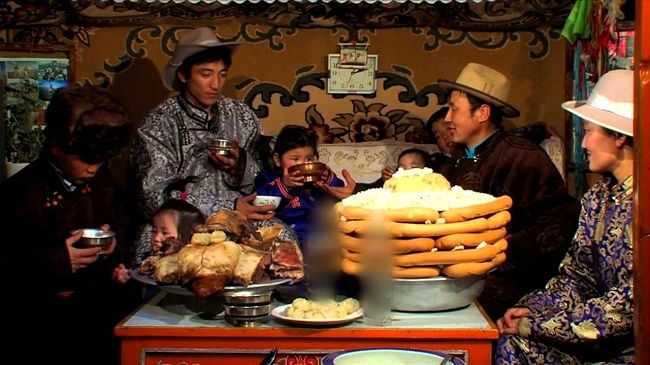
Originally, Tsagaan Sar was celebrated in autumn during the Xiongnu period, marking a time of abundance. However, in the 13th century, Genghis Khan shifted it to spring, symbolizing new beginnings with flowers, grass, and livestock births. Over time, Buddhist influences added spiritual elements to the festival.
Today, Tsagaan Sar is a time for family, respect, and gratitude. One of the highlights is visiting elders and performing a traditional greeting called zolgokh, placing your hands under their arms as a sign of deep respect. Communities, especially in rural areas, emphasize unity by visiting neighbors, and the day is marked by a grand feast featuring boov (traditional biscuits), buuz (dumplings), dairy products, and a whole roasted sheep’s back or cuts of meat, symbolizing abundance and hospitality.
Many families also participate in Buddhist rituals, offering food to ancestors and nature, and praying for blessings of health, wealth, and protection. Our livestock and guardian dogs are also honored during the festival, ensuring they are well-fed, reflecting the generosity extended to all beings.
💡Tips for Celebrating Tsagaan Sar in Mongolia
Now that you know a bit about the significance of Tsagaan Sar, here are some practical tips to make your experience even more memorable:
- Check the Date: Tsagaan Sar doesn’t have a fixed date and is determined by the lunisolar calendar, usually falling in February or March. Be sure to check the specific date for that year and plan your trip accordingly.
- Experience with a Local Family: To truly immerse yourself, consider spending Tsagaan Sar with a local family in the countryside. Many families welcome visitors, especially those interested in learning about Mongolian culture. Your tour operator can help arrange this.
- Wear Traditional Mongolian Clothing: If you’re invited to a family gathering, wearing a deel (traditional Mongolian robe) is a great way to show respect for the occasion. If you don’t have one, ask your guide if they can lend you a piece or check local markets like Narantuul for one.
- Respect the Rituals: Part of the celebration includes offering food to ancestors and spirits. Even if you’re unfamiliar with the rituals, observe respectfully and participate where possible.
- Embrace Mongolian Hospitality: Mongolians are known for their warm hospitality. You may be offered food and drink repeatedly, and it’s polite to accept, even if you’re full. You might also receive gifts—accept them with gratitude.
- Learn a Few Phrases: While many Mongolians speak some English, learning a few Mongolian phrases like “Sain baina uu?” (How are you?), “Amar baina uu!” (Greeting used during Tsagaan Sar!), and “Bayarlalaa” (Thank you) will help you connect with locals and show appreciation for their culture.
These simple actions can help you connect more deeply with Mongolian culture and make Tsagaan Sar an unforgettable part of your adventure!
💡Important Note
We strongly recommend that you avoid visiting Mongolia in winter or spring unless you’re fully prepared for extreme conditions. The harsh cold and unpredictable weather can make traveling challenging, so for the best experience, plan your trip during the warmer months. This way, you can fully enjoy Mongolia’s vibrant wildlife, cultural events, and stunning natural beauty in more comfortable conditions.
Thinking of Traveling to Mongolia in Shoulder Seasons?
Experience the magic of Mongolia’s winter and spring with a journey tailored to your preferences. Whether it’s breathtaking landscapes, unique cultural encounters, or adventurous expeditions, we ensure a seamless, safe, and high-quality experience. Contact us today to design your perfect winter adventure.
Why Summer and Autumn Are the Perfect Time to Experience Mongolia
Ah, summer in Mongolia—this is the time when everything comes alive! The weather is perfect for outdoor adventures, with sunny days and temperatures ranging from 15°C to 35°C (59°F to 95°F) from June to August. It’s warm enough to enjoy the beautiful landscapes, but not so hot that it’s unbearable. The whole country is buzzing with energy—green grass covers the steppes, the skies are as blue as can be, and the air feels fresh.
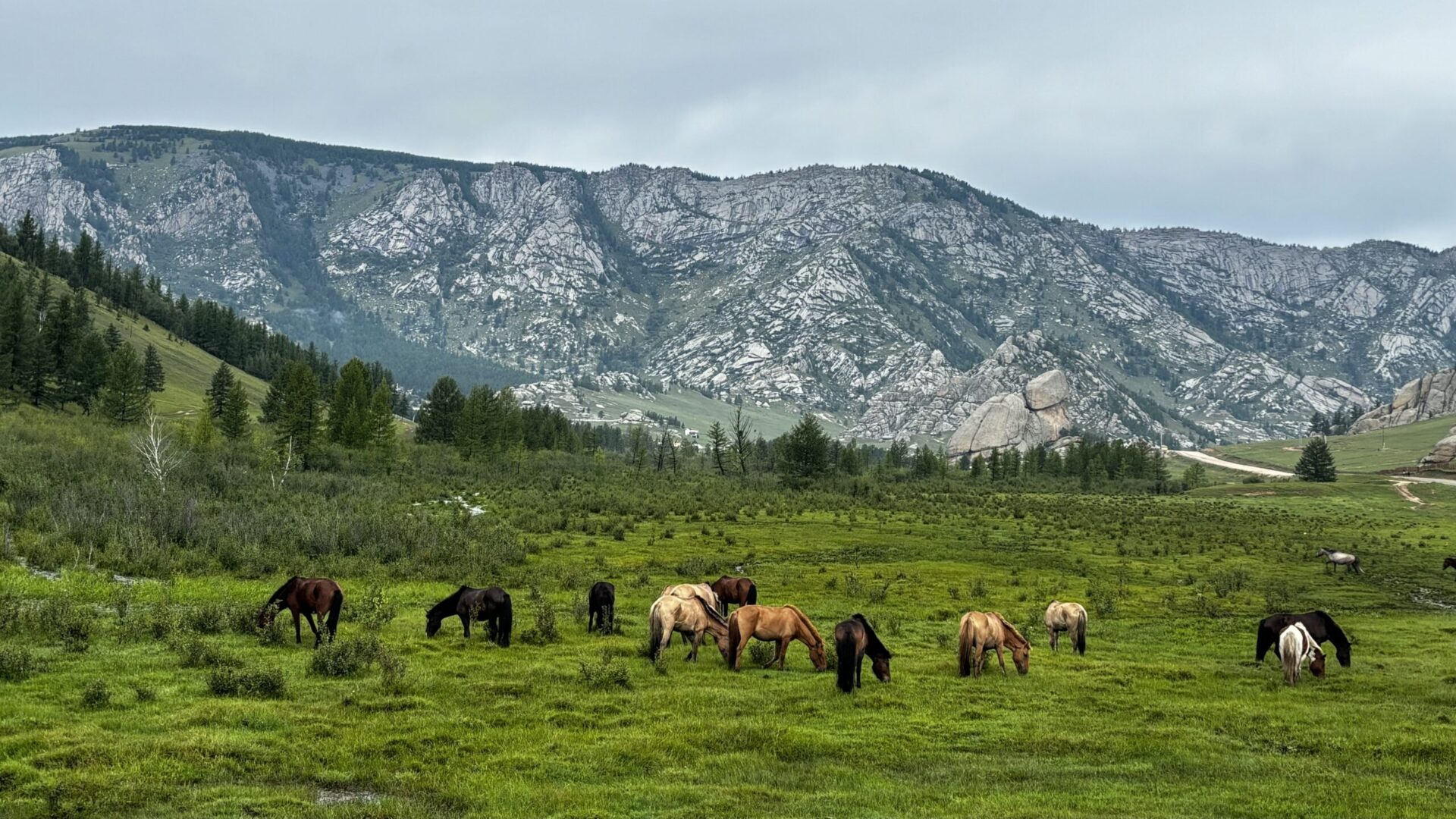
For us Mongolians, summer is a busy but exciting time. Our nomadic herders are out and about, taking care of their animals, moving between pastures, and preparing for the coming winter.
It’s also the season of dairy! During summer, we prepare for the colder months by making all sorts of dairy products. Our livestock are well-fed and plump, so it’s the perfect time to harvest milk and create cheeses, yogurt, and aaruul (dried curd). These are essential foods we store to keep us nourished during the harsh winter and spring. If you’re a fan of dairy, this is definitely the time to indulge!
Plus, summer is when we celebrate big, with festivals and traditional ceremonies. The most famous one is the Naadam Festival, which happens every July 11-15. It’s a huge celebration of the “Three Manly Games” – wrestling, archery, and horse racing. It’s full of excitement, pride, and so much fun. Also, with the long days of summer, you have plenty of time to enjoy all the events and explore the beauty of the country.
Pros:
- Ideal weather for exploration and adventure.
- Wildlife is abundant, making it great for birdwatching and safari tours.
- The vibrant Naadam Festival offers a deep dive into Mongolian heritage.
- Nomadic culture is at it’s finest.
Cons:
- High season = more crowds at popular spots like Ulaanbaatar and the Gobi Desert.
- Higher costs for accommodation and tours.
- Occasional thunderstorms or heat waves.
Summer highlight: Naadam Festival
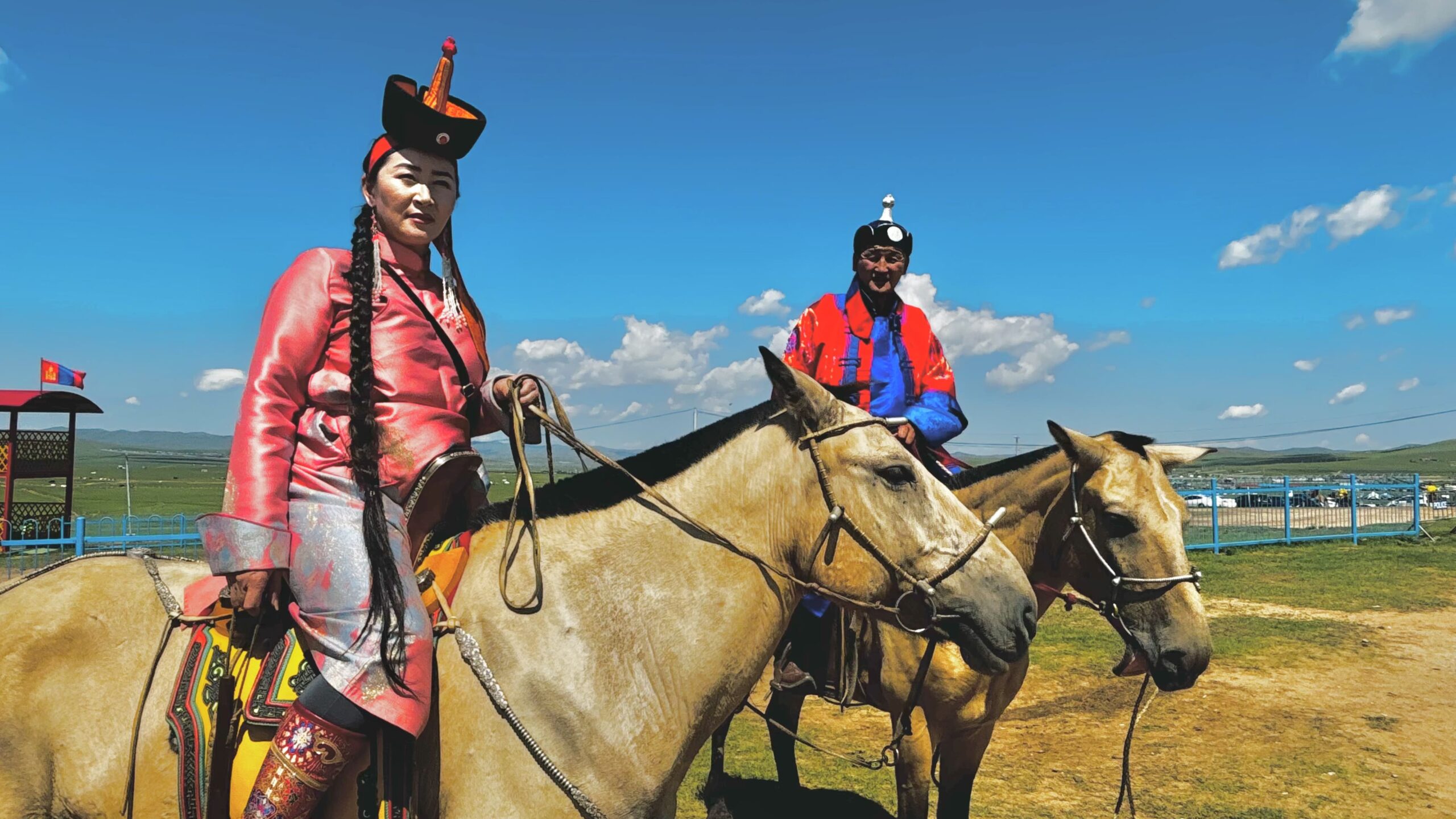
Every year, we dress up in our most beautiful deel (traditional attire) and head out to the countryside to celebrate Naadam. It’s a time for family, delicious food, and lots of fun, and the best part? We get time off work to enjoy it—it’s part of our constitutional rights!
Naadam is all about the “Three Manly Games”—wrestling, horse racing, and archery. It has a history going back over 2,000 years, from the time of Genghis Khan when it was used to train warriors. Today, it’s a national holiday celebrating our independence and our nomadic traditions.
- Wrestling: Imagine 1,000+ wrestlers competing for the title of “Champion”! They earn title inspired by animals like falcons, elephant, and lion.
- Horse Racing: Young kids (ages 7–12) race horses over long distances, with the fastest horse honored in a special ceremony.
- Archery: Mongolian archery has a 2,000-year-old history, and we even sing traditional songs to praise the archers’ skills.
Naadam isn’t complete without khuushuur—crispy fried dumplings, perfect for snacking. If you like dairy, you’re in luck! It’s the time for popular Mongolian booze called airag (fermented mare’s milk). Airag is made by adding a small amount of previously fermented airag to the fresh mare’s milk to start the fermentation process. The milk is stirred regularly for a couple of days, and during this time, it develops a slightly fizzy, sour taste with a low alcohol content—usually around 2-3%. The fermentation process gives it a mild alcoholic kick, but it’s not strong like beer or wine.We often serve it to guests as a sign of hospitality, and it’s common to share a bowl while toasting with friends and family. Drinking airag is believed to bring good health and prosperity, and it’s especially refreshing on hot days. I and of course, vodka is always part of the celebration!
Naadam is the heart of Mongolia’s summer—full of tradition, great food, and unforgettable memories. If you’re here for it, you’ll see why it’s our favorite time of the year!
📌Friendly reminder to you
- Even though it’s summer, temperatures can change a lot, especially in the mornings and evenings, so bring layers and a light jacket to stay comfortable. If you’re hiking or camping, be prepared—some places are remote, and the weather can change fast.
- Rain is more common in summer now, thanks to climate change, so watch out for sudden downpours or floods, especially in the countryside. Sometimes rivers get too high to cross by car or even horse.
- Mongolia’s hospitality is huge! When you greet someone, give a slight bow and offer your right hand with an open palm. It’s a small gesture that goes a long way.
- If you’re planning to camp near rivers or lakes, don’t forget your sunglasses, hat, and mosquito repellent—especially in July, when insects are intense.
- Naadam season is a big deal, so book early—accommodations and tickets can sell out fast. Plan ahead to avoid any last-minute stress and enjoy the festival to the fullest!
- If you’re looking for a more authentic and community-driven experience of Naadam, consider attending a local mini-Naadam, which takes place in towns and villages across the country.
- For something truly unique, you can also visit Danshig Naadam—a fascinating blend of the traditional “Three Men’s Games” and Mongolian Buddhist rituals, offering a deep spiritual and cultural experience you won’t find anywhere else.
Experience the Thrill of Naadam Festival with Us!
Autumn (September to November)
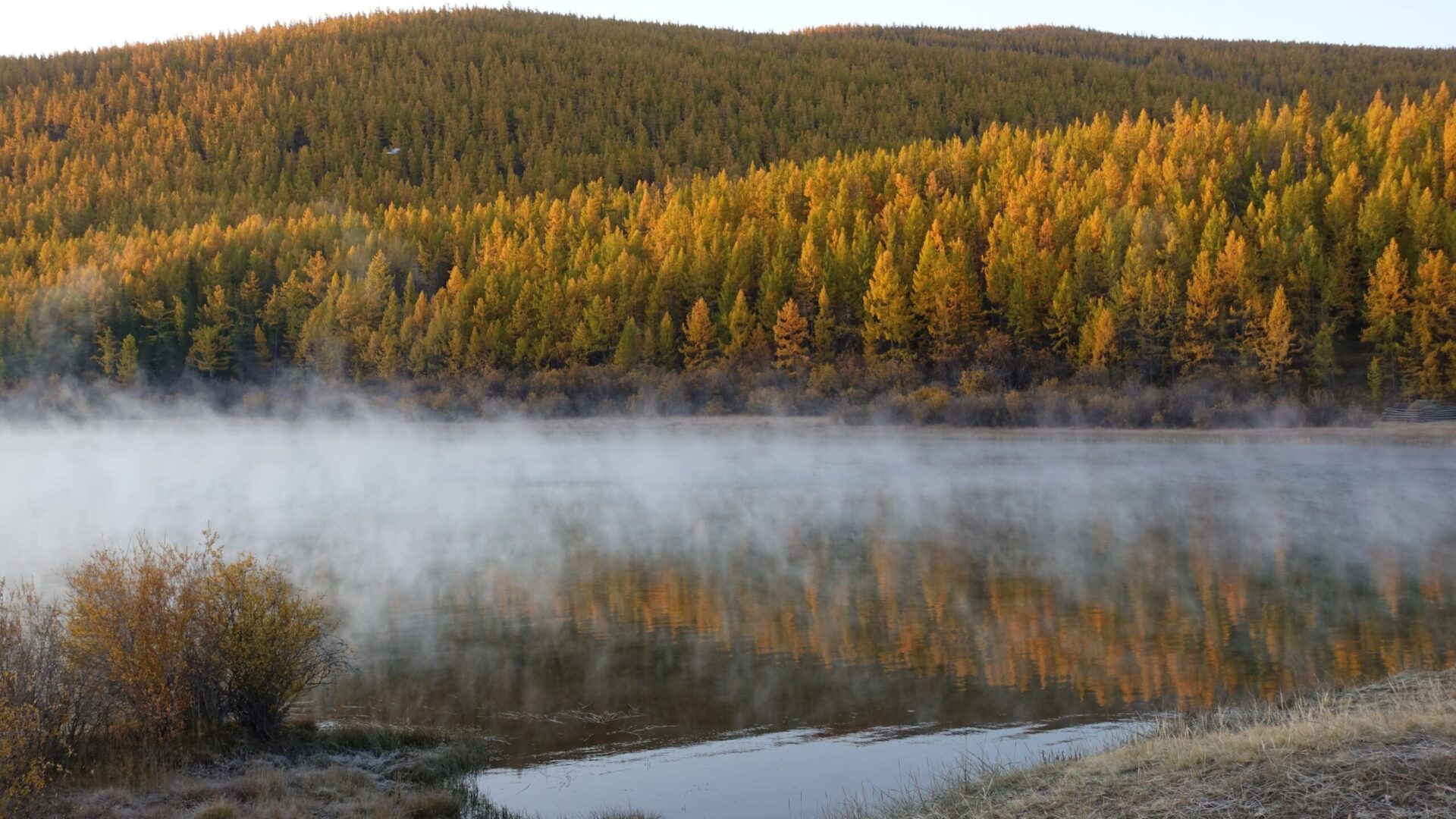
Once summer fades, autumn comes in with a cooler breeze and the most stunning colors. The steppes turn golden, and the forests light up in reds, oranges, and yellows. The temperatures are still pleasant, usually around 10°C to 20°C (50°F to 68°F), making it perfect for outdoor activities like hiking, biking, or just wandering through the countryside.
Autumn is also harvest time here. People are busy collecting crops, making hay,s and preparing for the long winter. It’s a quieter, more peaceful time, but still full of life. Some villages even hold harvest festivals, where you can taste seasonal foods and watch traditional practices. The air feels fresh, and you can really soak in the calmness of nature before winter sets in.
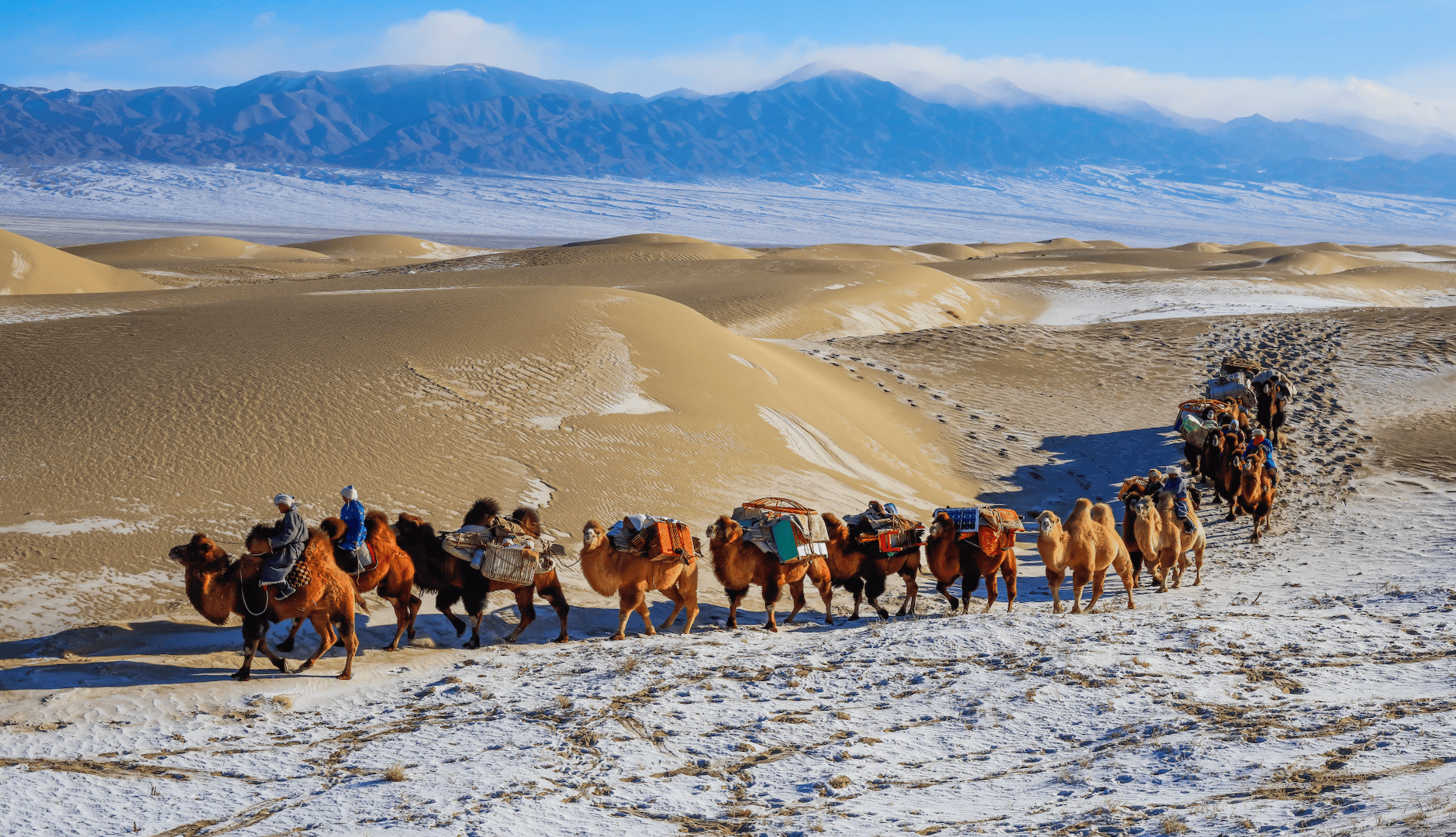
You know, one of the coolest things about Mongolia is how we still live by our nomadic traditions, especially when it comes to migration. In autumn, herders start moving from the high mountain pastures where they’ve spent the summer, with plenty of fresh grass and no mosquitoes. They head down to their winter camps, which are carefully chosen in valleys or places protected by mountains or forests. These spots help keep us safe from the harsh winds and freezing temperatures that can drop to -50°C (-40°F) in winter.
The camels are super important during this migration—they carry the ger (our traditional yurt) and everything we need for the move. A typical family might use around 4 to 7 camels to help transport their home, while also managing big herds of livestock—sometimes up to 1,000 animals. If you’re lucky enough to witness this seasonal migration, it’s an unforgettable experience and gives you a real taste of Mongolia’s nomadic spirit and how we’ve lived for centuries. It’s truly something special!
Pros:
- Temperatures range from 10°C to 20°C (50°F to 68°F), making it ideal for outdoor activities like camel trekking and cycling.
- Autumn paints Mongolia’s landscapes in rich golden and red hues, especially in the steppe and forests, ideal for photographers and artists.
- The tourist season starts winding down, providing a more peaceful experience at popular sites.
- Season for the famous Golden Eagle Festival in Western Mongolia
Cons:
- While mild, temperatures can suddenly drop, especially in the evenings.
- Some rural areas and parks may become harder to reach as winter approaches.
- Daylight hours decrease, which can limit time for exploration.
- In the northern and mountainous regions, snow can arrive earlier than expected, potentially affecting outdoor plans.
Autumn Highlight: The Golden Eagle Festival
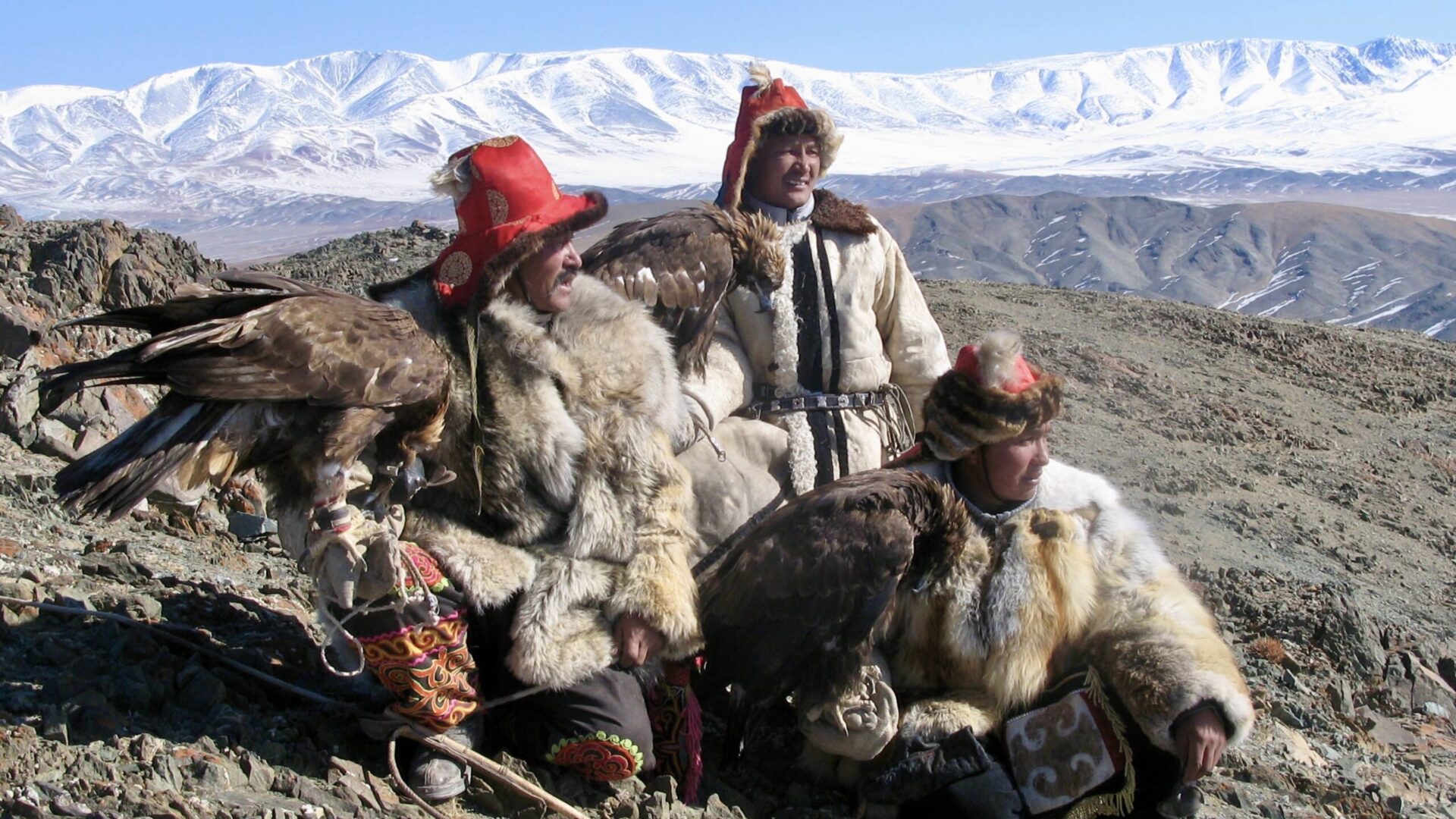
The Golden Eagle Festival, held every September and October in Bayan-Ölgii Province, celebrates the ancient tradition of Kazakh eagle hunting. It features exciting competitions like eagle calling, speed, and precision hunting, as well as traditional horseback games like kökpar and archery. Autumn is ideal for the festival as it marks the start of the hunting season. After summer rest, the eagles are at their peak for training and hunting. The eagle hunting season is tied to snow, with hunters removing the eagles’ blindfolds when they spot prey.
The festival brings together local Kazakh communities and travelers, offering a unique chance to engage with the culture and experience warm hospitality.
What to expect?
- Eagle Hunting Competitions: The star of the festival! Watch in awe as eagle hunters showcase their incredible bond with their birds in thrilling hunting simulations. Eagles swoop down at breathtaking speeds, landing gracefully on their hunters’ arms, demonstrating their skill and precision.
- Traditional Mongolian Sports: Alongside the eagle hunting, enjoy watching horse racing, wrestling, and Uriankhai archery—traditional sports that add even more energy to the already vibrant atmosphere of the festival.
- Costume Parade: You won’t want to miss this! The eagle hunters wear stunning, fur-lined coats, intricate headpieces, and finely crafted hunting gear, turning the parade into a living showcase of their culture. It’s a feast for the eyes.
- Cultural Performances: Immerse yourself in the rich heritage of the Altai region with local music, dances, and storytelling. These performances are a fantastic way to learn about the history and traditions of the Kazakh community.
- Meet the Eagle Hunters: Get up close and personal with the hunters and their incredible birds.You can learn about the eagle training process, hear fascinating hunting stories, and even take photos with the eagles themselves.
- Horseback Riding & Kazakh Meals: For a truly immersive experience, try horseback riding through the stunning Altai Mountains. You’ll also have the chance to enjoy hearty Kazakh meals that will keep you warm and energized.
Suggested reading from our blog:
📌Friendly reminder to you
- Sometimes, autumn surprises us with snow as early as September, especially in the northern and western parts of the country. A good, warm coat or jacket is a must since temperatures can drop quickly.If you’re camping or staying in remote areas, thermal clothing is essential to stay warm during chilly nights.
- Autumn is a great time to spot wildlife as animals are more active before the cold sets in. If you’re into photography, don’t forget to bring binoculars and a zoom lens!
- You might come across a nomadic family moving from their summer camp to their winter home. It’s a beautiful sight, but remember to keep a respectful distance from their livestock, especially camels, as they’re in the middle of their seasonal migration.
- Although autumn is quieter than summer, popular spots can still fill up quickly, especially around events like the Golden Eagle Festival. Be sure to book your accommodations in advance.
- If you’re keen to experience Kazakh eagle hunting culture without the crowds, consider visiting the smaller, local eagle festivals in the soums of Bayan-Ulgii, like Altai and Sagsai. These festivals are more community-focused and offer a more intimate and authentic experience, away from the big, commercialized events. It’s the perfect way to connect with the tradition in its true form.


